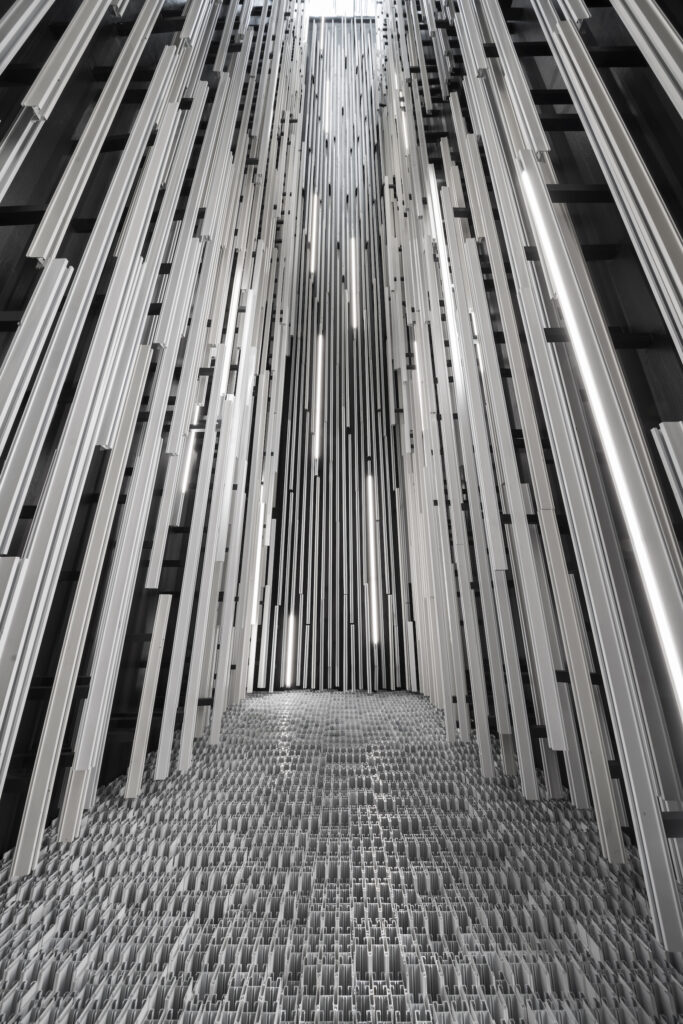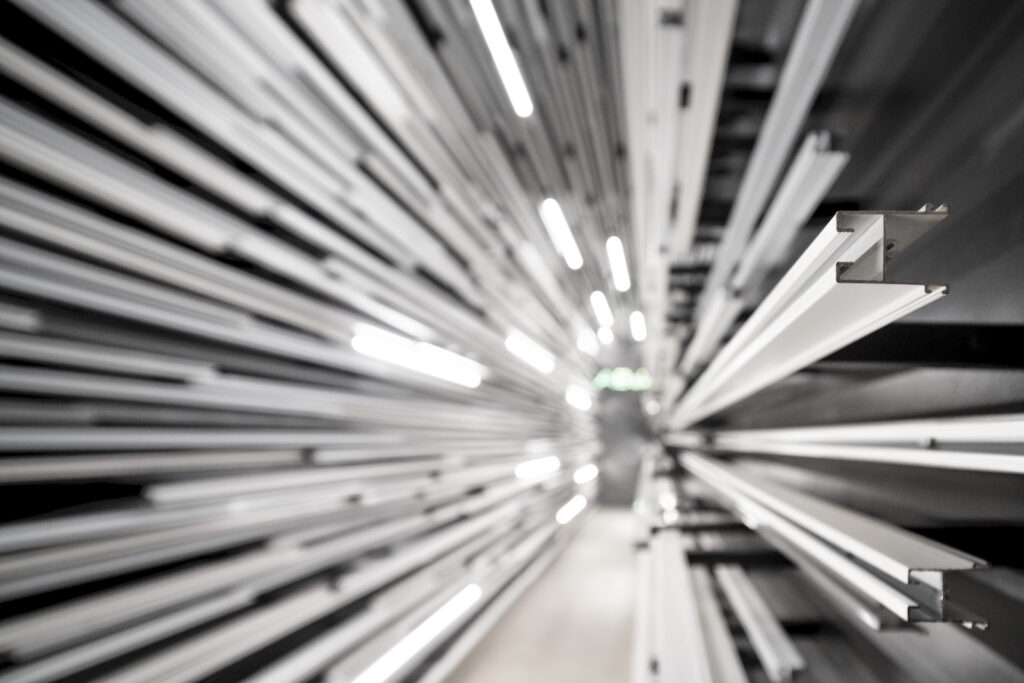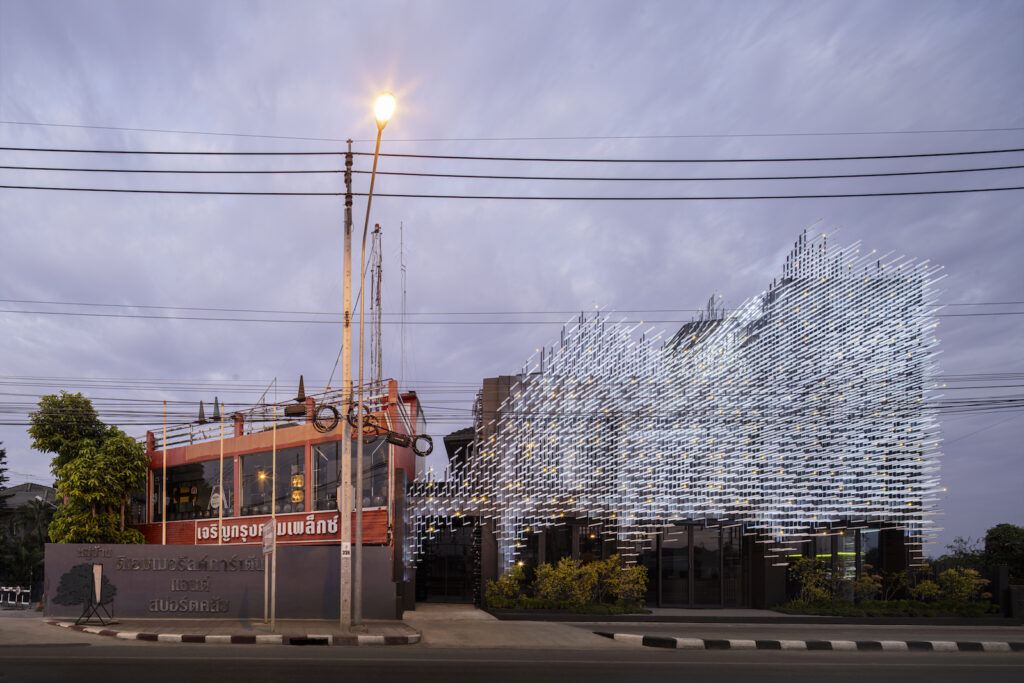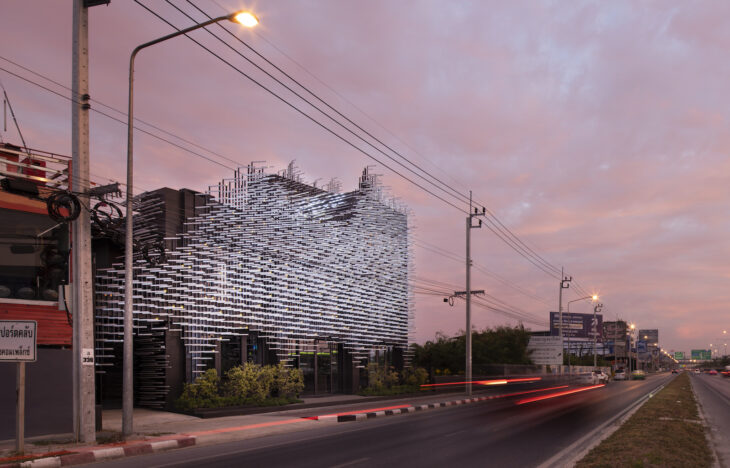A new Museum of Modern Aluminum (MoMA) has risen on the busy streets of Nonthaburi, Thailand. The project displays a stunning use of aluminum extrusions and pays homage to the history of aluminum in the country. There are about 40 extruders in Thailand today with seven main extrusion companies, which account for 80% of the market.
The MoMA project was designed by Hung and Songkittipakdee (HAS) design and research, which took their lead from Goldstar Metal with the goal of reviving the significance of aluminum in Thailand. At the end of the 20th century, Thailand was the largest aluminum manufacturer in Southeast Asia. Its diverse and abundant aluminum profiles not only satisfied the local market, but were also exported to overseas markets.
However, when the Asian Financial Crisis hit without warning in 1997, Thailand’s aluminum industry was forced to sell aluminum profiles at low prices to hardware markets around the country in order to survive, resulting in the clutter of aluminum advertising signs, balcony fences, and ground floor extensions that make up the present-day Bangkok streetscape. MoMA was born out of such an environment and is located at the busiest traffic hub on the outskirts of Bangkok, where heavy traffic has led to a variety of commercial signs lining Ratchaphruek Road.
The design process for MoMA began with the study of aluminum signboards commonly seen on the streets, which inspired the designers to use aluminum as an element throughout the entire building. Through the investigation and research of aluminum extrusions, a totally distinct aesthetic texture was created, and a new sense of architectural vernacular was discovered in Thailand’s concrete jungle.
MoMA not only uses aluminum profiles as display items, but they also continue in the design of the exterior, interior, and landscape, as well as the lighting and furniture, creating a sense of totality inside and out. The façade is clad with tens of thousands of aluminum profiles, each with a slightly different color and texture. The profiles, combined with LED lighting, extend from the front façade to the two side façades, and then straight through the “tunnel” space on the west side, filtering and dampening the noise of the external environment and guiding visitors to the quiet exhibition place. The aluminum extrusions on the façade not only provide a variety of lighting functions, but also shade the interior from excessive sunlight to maintain a comfortable interior environment.


Creating the MoMA
The first generation of what became Goldstar Metal began with workers who grew up in the factory after their parents established the company over 30 years before. The company flourished and today has five extrusion facilities (with a total of 13 extrusion presses ranging from 660–1,800 tonnes), a remelt plant, window and door assembly plant, two powder coating plants, an anodizing plant, and a wood finish plant.
In 2014, the second generation founded AB&W Innovation Co. Ltd., an extrusion facility, with the intent of focusing on innovation with aluminum. According to Ms. Chayanee, vice president AB&W, “We believe in working closely with our customers to achieve the best extrusions in terms of mechanical properties and surface finishes. Further, aluminum plays a vital role in the circular economy, as aluminum can be 100% recycled and so has become the material of the future. Since architecture is the main sector in Thailand, our R&D team continuously develops and designs aluminum solutions with a philosophy and passion for better living and sustainability.” With this in mind, AB&W devoted themselves to creating a place that will give instruction on aluminum and present imaginative ideas for its use. This was the impetus for the museum project born out of the dream of the owners.
When they were assigned the project, HAS principal architects, Jenchieh Hung and Kulthida Songkittipakdee, did a lot of research on aluminum and within the AB&W extrusion factory to find the inspiration suitable for the site. They took advantage of the material, using aluminum inside and outside of the museum. They hand chose profiles to provide a good sense of proportion on the outside of the building, integrating the exterior façade system into a continuous experience on the inside.
The building aims to showcase the futuristic side of aluminum. The architects learned about extrusions and were amazed by the functionality of the cross-sections. Though extrusions are generally used as structural supports in buildings, for the MoMA project, they saw extrusions as forming a building facade that would express the idea that “ordinary things can be reversed to the extraordinary” using the power of design.
The flexibility of the 400 sq m museum space can meet a variety of display, reception, and activity needs. At MoMA, Thailand’s aluminum story will be presented. The museum will also be a space to educate visitors on where aluminum comes from and how it can be used in daily life.


Editor’s Note: This article first appeared in the April 2022 issue of Light Metal Age. To receive the current issue, please subscribe.

